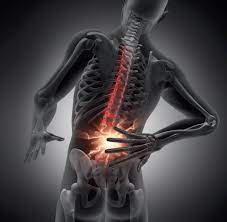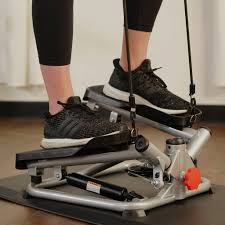
How to Create a Personalized Chronic Pain Management Plan
Chronic pain affects millions, hindering daily activities and diminishing quality of life. Amidst various treatments, understanding how exercise combats chronic pain offers a beacon of hope for many seeking relief.

Chronic pain and inflammation can be debilitating, affecting millions of people worldwide. They can significantly impact one’s quality of life, making everyday activities a challenge. While medication and other conventional treatments play a role in managing these conditions, an often overlooked yet incredibly effective approach is exercise. Engaging in regular physical activity can have profound effects on chronic pain and inflammation management. In this post, we will delve into the role of exercise in alleviating pain and inflammation, offering insights into how movement can be a potent tool for improving overall well-being.
Understanding Chronic Pain and Inflammation
Chronic pain is defined as persistent pain that lasts for weeks, months, or even years. It can be caused by various conditions such as arthritis, fibromyalgia, back pain or nerve damage. Inflammation, on the other hand, is the body’s natural response to injury or infection. While acute inflammation is a necessary part of the healing process, chronic inflammation can lead to tissue damage and prolonged pain. Both pain and inflammation can significantly impact an individual’s physical and mental well-being.

The Benefits of Exercise for Chronic Pain Management
Engaging in regular exercise has been shown to have numerous benefits for individuals suffering from chronic pain. Firstly, exercise helps to release endorphins, which are natural painkillers produced by the body. These endorphins not only reduce pain perception but also promote feelings of well-being and happiness. Additionally, exercise improves blood circulation, delivering essential nutrients and oxygen to the affected areas, which aids in the healing process.
Furthermore, regular physical activity helps to strengthen muscles and joints, reducing the strain on painful areas. This increased strength and flexibility can lead to improved overall function and reduced pain levels. Exercise also promotes weight loss or maintenance, which is crucial for individuals with pain as excess weight can exacerbate symptoms. By shedding extra pounds, individuals can experience a significant reduction in pain and inflammation.

Types of Exercise for Chronic Pain and Inflammation
When it comes to managing pain and inflammation, not all exercises are created equal. Low-impact exercises such as swimming, cycling, and walking are highly recommended as they put less stress on the joints and muscles. These activities provide cardiovascular benefits without causing further damage or exacerbating pain. Additionally, stretching exercises such as yoga or Pilates can help improve flexibility and reduce muscle tension, providing relief from chronic pain.
Strength training exercises, when done correctly and under the guidance of a professional, can also be beneficial for managing pain. By strengthening the muscles surrounding the affected area, individuals can experience improved stability and reduced pain. However, it is essential to start slowly and gradually increase the intensity and duration of the exercises to avoid injury or worsening of symptoms.
The Power of Exercise
Exercise triggers a cascade of positive effects in the body, including the release of endorphins, which are natural pain relievers. Physical activity also stimulates the production of anti-inflammatory compounds, helping to counteract chronic inflammation.

Enhancing Joint Mobility
For individuals with conditions like arthritis, regular exercise helps maintain joint flexibility and mobility. Low-impact exercises such as swimming, yoga, and tai chi can be especially beneficial for promoting joint health.
Strengthening Muscles and Supporting Joints
Strong muscles help support and stabilize joints, reducing the strain and stress on them. This is particularly important for individuals dealing with pain, as proper muscle strength can alleviate discomfort and improve overall function.
Cardiovascular Health and Inflammation
Exercise improves cardiovascular health by enhancing blood circulation and lowering the risk of heart disease. Additionally, cardiovascular exercise can help regulate the body’s inflammatory response, contributing to a reduction in chronic inflammation.

Mind-body exercises such as yoga, meditation, and deep breathing techniques can not only help manage pain and inflammation but also promote relaxation and reduce stress. Stress reduction, in turn, contributes to a lower inflammatory response.
Gradual Progression
When starting an exercise routine, it’s important to begin slowly and gradually increase intensity. Overexertion can exacerbate pain and inflammation, so listening to your body and making steady progress is key.
Consistency is Key
Consistency is crucial when using exercise as a tool for managing pain and inflammation. Engaging in regular physical activity and staying committed to your exercise routine yields the most significant and lasting benefits.

Overcoming Barriers to Exercise
While exercise has numerous benefits for managing pain and inflammation, many individuals face barriers that prevent them from engaging in physical activity. One common barrier is fear of exacerbating pain or causing further injury. It is crucial for individuals to consult with healthcare professionals or physical therapists who can provide guidance on suitable exercises and modifications to ensure safety and effectiveness.
Another barrier is lack of motivation or energy due to pain. It is essential to find activities that are enjoyable and can be incorporated into daily routines. Setting realistic goals and tracking progress can also help individuals stay motivated. Additionally, joining support groups or exercising with a partner can provide the necessary encouragement and accountability.
It’s crucial to design an exercise plan that suits individual needs and limitations. Consulting a healthcare professional or physical therapist can help create a personalized exercise routine that addresses specific pain and inflammation issues.

The role of exercise in managing chronic pain and inflammation cannot be overstated. From reducing pain perception and promoting flexibility to regulating inflammatory responses, movement offers a holistic approach to improving overall well-being. Embracing a regular exercise routine tailored to your individual needs can empower you to take control of chronic pain and inflammation, enhancing your quality of life and promoting a healthier, more active future. Remember, while exercise may not be a complete replacement for other forms of treatment, it can be a powerful complementary tool in your journey toward pain relief and better health.
Disclaimer: The information provided in this content is for general informational purposes only. It is not intended as medical or healthcare advice, diagnosis, or treatment. Always seek the advice of a qualified healthcare professional with any questions you may have regarding a medical condition or healthcare decisions.
















